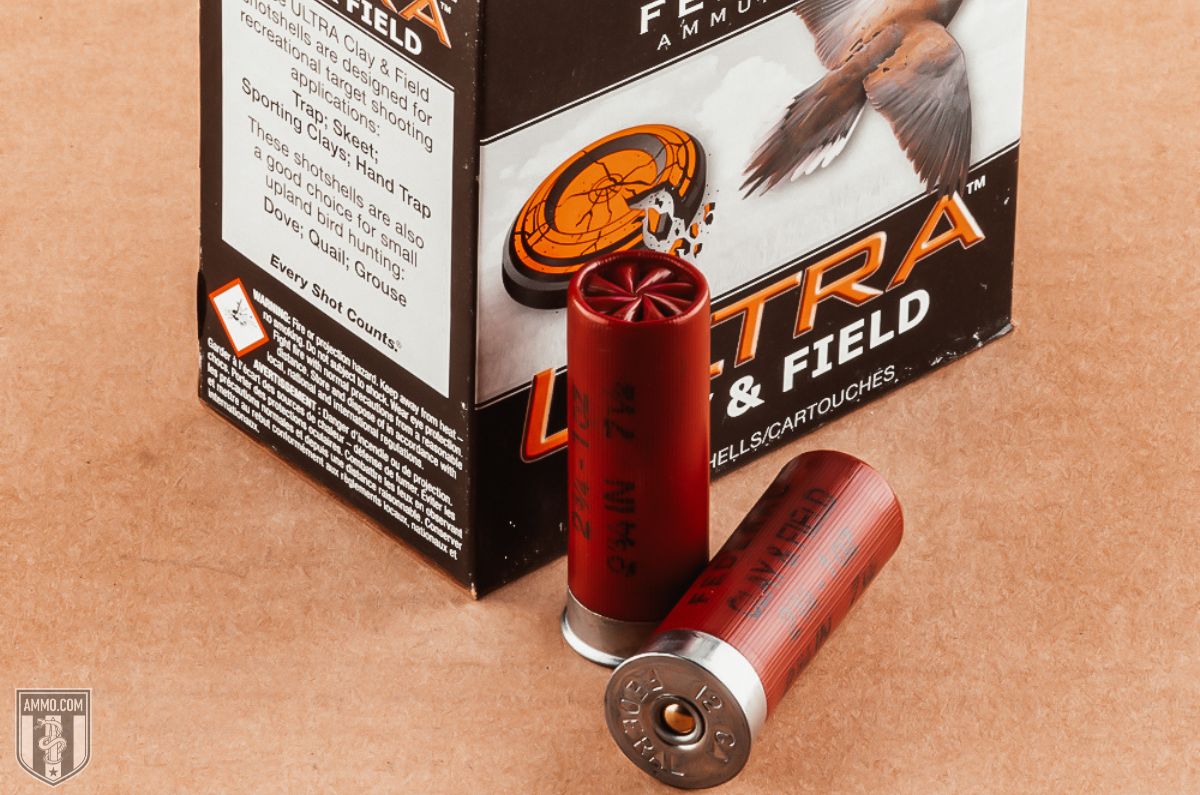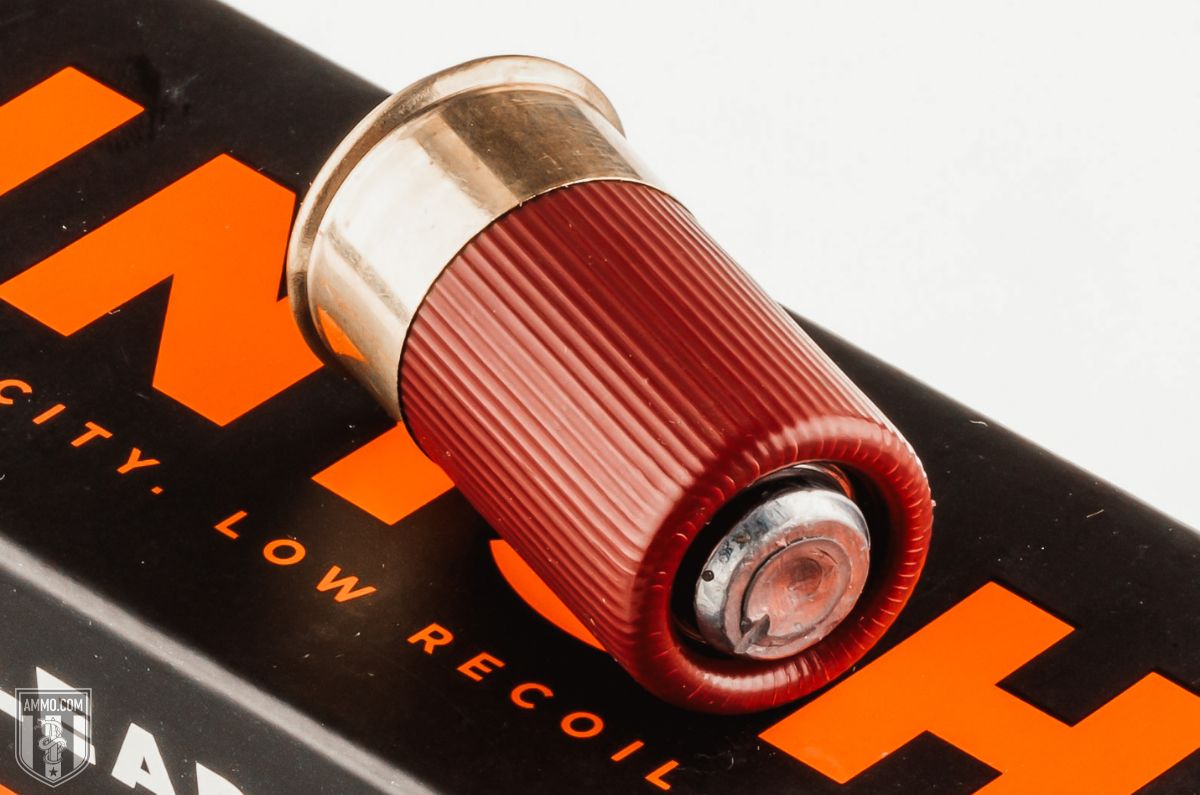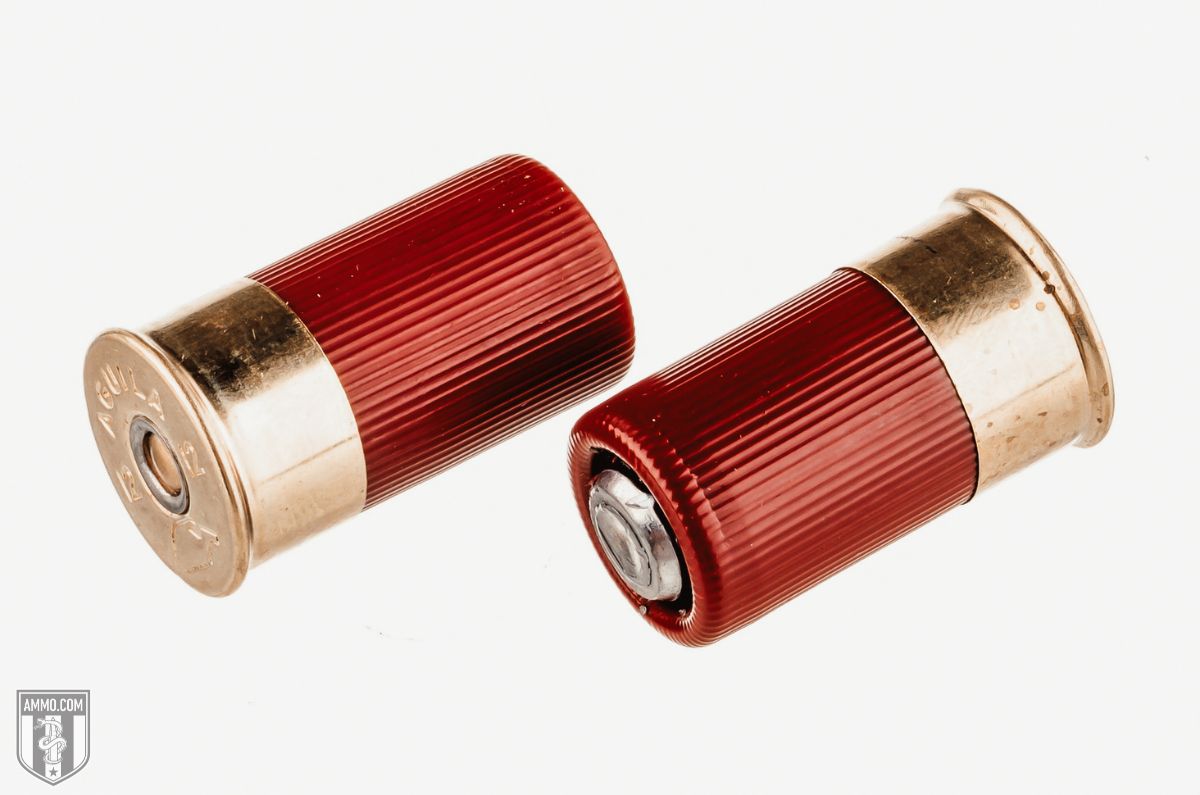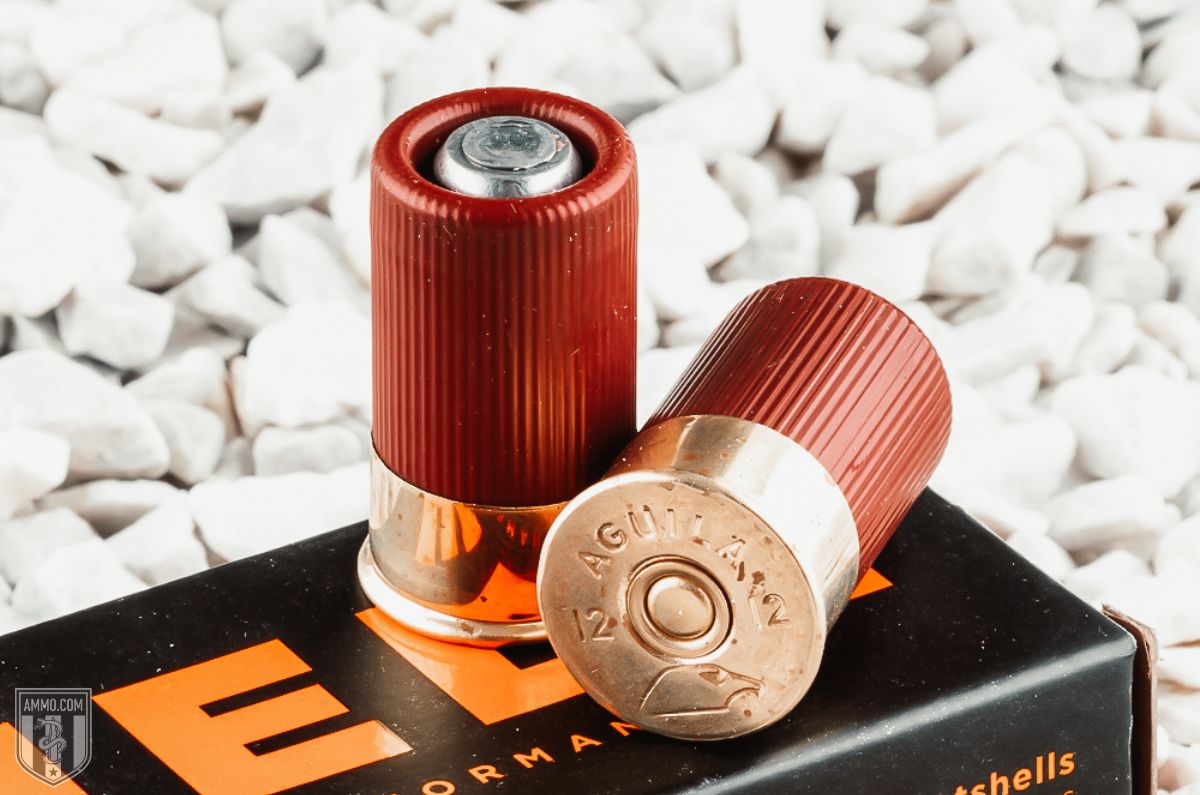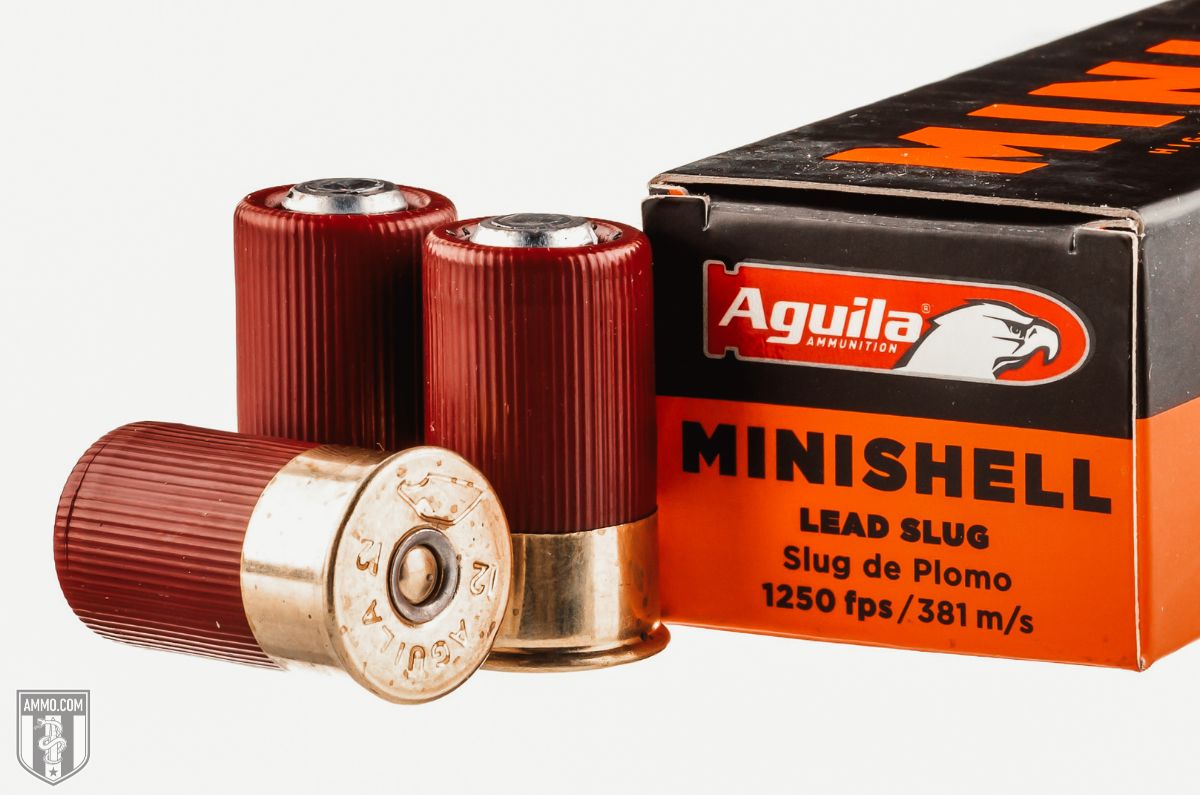16ga vs 12ga: Differences and Similarities

Undoubtedly, the 12 gauge is more prevalent in the U.S. than the 16 gauge. Should this be the case?
When we compare the 16ga vs 12ga, is the 12 gauge overwhelmingly better?
Ballistically speaking, I don't believe so; however, I'm not in a hurry to trade my 12ga shotgun in for a 16ga anytime soon.
You'll see why as we pit the 16 and 12 gauges against each other in nine categories that all shotgunners should consider.
16ga vs 12ga: Performance Comparison
There's an old saying about the 16 gauge that goes something like "carries like a 20, shoots like a 12", well we're going to put that to the test in this article.
We will see how well modern shotgun gauges perform in real-world situations, not only on a ballistics table.
But first, we will learn the differences in the shell size.
Shell Specs
Understanding the difference in shotgun gauges is confusing for most people to grasp at first because it's backward from handgun and rifle calibers.
With rifle and handgun calibers, as the number gets smaller, so does the bullet diameter. However, with shotgun gauges, the bore diameter increases as the number gets smaller.
So a 12ga is a larger gauge than a 16ga.
On top of differences in gauges, there are differences in shot types and sizes within each gauge. To avoid as much confusion as possible, we will only discuss the 12 and 16-gauge shell dimensions.
The bore diameter for a 12ga shotgun is .729". 12-gauge shells are 2 3/4", 3", and 3 1/2" in length.
The 16ga shotgun has a bore diameter of .663", and the 16 gauge shotgun shells are 2 3/4" long.
It is possible to load a 16-gauge shotgun shell into a 12-gauge shotgun, which can be incredibly dangerous. If you're shooting both gauges, be absolutely sure you are inserting the right shell into the correct gun.
Recoil
A few factors determine felt recoil, the biggest being the shooter and gun weight.
16-gauge shotguns are usually a little bit lighter than 12-gauge shotguns, but the shell holds less powder so that it won't have as much recoil as a 12-gauge.
All shotguns kick differently, even if they're the same gauge. Single shot, pump-action, and semi-auto shotguns have different felt recoil because of how they use or don't use the recoil to cycle the shotshell.
The same is true for the shell lengths. A 2 3/4" shell has less recoil than a 3", which won't have the amount of kick a 3 1/2" shotshell. This is due to the amount of powder each shell holds.
This section is a tie because 12-gauge loads have more recoil, especially when shooting longer shells, but the lighter gun of the 16-gauge will have about the same amount of recoil.
Effective Range
Shotguns are not intended for long-range shooting. Most shotguns are lethal out to 40 yards for small game hunting.
I've witnessed 12-gauges drop ducks at 60+ yards. However, I recommend a maximum distance of 50 yards, which is a long shot for any shotgun pellet to travel accurately. I prefer my targets within 30 yards when hunting with my 12-gauge.
Several variables factor into the lethal range of a shotgun, and none is more significant than projectile selection. If you choose a smaller shot size, it won't have enough energy to go as far as a larger shot size.
Shooting a slug is a little different because the slug is similar in shape to a bullet, more so than a pellet or BB. The maximum effective range for the average person shooting a 12 gauge rifled slug is 100 yards or closer. However, a 12ga slug in the hands of a skilled marksman can be effective out to 300 yards.
Rifled slugs are needed in shotguns because the shotgun barrel is smooth inside, unlike a rifle barrel with grooves that cause the bullet to spin. Sabot slugs don't have rifling, so they're not as accurate at longer ranges.
When comparing similar shot size and shell length, the 12 gauge shotgun has a farther lethal range than a 16 gauge, but only slightly.
Pattern Density
Shotgun accuracy is not determined in the same manner as rifle accuracy.
Let me explain.
A rifle only has one projectile, whereas a shotgun (besides when shooting a slug) has many pellets.
So the accuracy of a rifle round is based on a single projectile. In contrast, the accuracy of a shotgun is determined by how many pellets you can put on the target or pattern density.
Unlike rifles, shotguns are rarely fired from a resting position, maybe while turkey hunting, but even then, you're fully supporting the firearm most of the time. You're typically swinging the shotgun, trying to lead the moving target.
We will determine the accuracy of a 12 gauge shotshell vs a 16 gauge shotshell, which will put more pellets on target at 40 yards using similar shells.
The 12 gauge shotgun shell has a slight advantage here because even with the same shell length and shot size, it can hold a few more pellets, making all the difference when hunting fowl.
Stopping Power
The stopping power of a shotgun is determined by the shot type and amount of powder in the shell. Different shot types have various amounts of energy that will allow the projectile to penetrate further or less and more powder means more power.
A slug will have the most stopping power, followed by buckshot. This is why most deer hunters who use a shotgun prefer one of these loads.
A 12-gauge shell holds more powder than a 16-gauge shell; therefore, if we use the same projectiles, the 12ga will have more stopping power.
The 12-gauge wins this section because it can hold more powder and slightly larger projectiles.
Hunting
Shotguns are a trusted tool for countless hunters. They can be used for whitetail deer hunting, waterfowl hunting, varmint hunting, and small game hunting.
The 12ga is probably the most prolific shotgun in history because it's versatile.
Simply by changing the shell, you can hunt a wide range of species.
It's my choice for duck hunting.
While the 12ga is an excellent option for upland game hunting, many would argue the 16ga is the better option in this instance, and I would agree because upland game generally have thin, soft skin, so you don't need as much payload to harvest quail, pheasants, or grouse ethically.
If you're looking for a real challenge while upland bird hunting, use a .410 instead of a 12ga or 16ga!
The 12-gauge wins this category because it gives you more options in shell selection so that you can hunt a wider variety of game with it.
Home Defense
In my opinion, a shotgun is the best home defense gun. This is because shotguns typically don't over-penetrate, and the increased number of projectiles means you don't have to be as precise when aiming in a high-pressure situation.
Depending on the shotgun type, they'll hold multiple rounds, which are relatively simple to reload.
My first choice is a 12ga because of the additional stopping power 3 1/2" shells offer, plus the wide variety of projectiles.
However, I would choose the smaller 20-gauge shotgun over a 16-gauge for self-defense because a 20ga has more shell options, and the ammo is easier to find, as we will see shortly.
The lack of larger shell options hurts the 16ga as an effective home defense weapon.
12-gauge buckshot wins this section because it has more stopping power than a 16ga and still has multiple projectiles in the shell.
Shell Cost & Availability
As if the 12-gauge didn't have enough of an advantage, we come to a significant purchasing factor where the 12ga is superior.
I believe that the cost and availability of ammo are overlooked factors for many.
Even when ammo is in high demand and the shelves are bare, you can find 12-gauge target ammo. The specialized ammo for waterfowl, turkey, and deer hunting is more difficult to find in those times.
However, because so many gun enthusiasts use a 12ga, ammo companies are generally producing large quantities of all the varieties of 12-gauge ammo, which generally makes it more available.
It's much rarer to find 16-gauge shells, though it's not impossible, and in times of high 12ga demand, it might be a little easier to find 16ga shells because fewer people own one.
Pricing depends on many factors, but when comparing apples to apples as best we can, 12-gauge shells are less expensive.
An inexpensive 16ga lead shot round used for upland bird hunting or sporting clays will cost around $0.52, while a cheap round of 12ga will cost $0.44 each time you pull the trigger while shooting skeet.
However, if you want to purchase a 12-gauge slug, be prepared for a cost of $2.00 per round.
The price also goes up per round when you shoot steel shot, tungsten, or bismuth while waterfowl hunting, but that's for all gauges.
The winner of this category is once again the 12-gauge.
Shotgun Cost & Availability
While shotguns can get very expensive, for the most part, they're reasonably priced.
However, the 12-gauge is much easier to find at a reasonable price than the 16-gauge.
You can go to most pawn shops and purchase a used 12ga for cheap, even though I wouldn't advise that unless you're a gunsmith or know what problems to look for when buying a used gun.
Companies like Mossberg, Winchester, Benelli, Berreta, Browning, and Remington make 12-gauge shotguns in pump-action, semi-automatic, and over-under models at affordable prices.
One of the most popular shotgun models of all time, the 12 ga Remington 870 costs around $500, while a 12ga Benelli over under shotgun can cost as much as $4,000.
It's challenging to find 16-gauge guns for less than $600, and you should expect to pay no less than $1,000 for a quality firearm.
I sound like a broken record; the 12-gauge wins this section because the guns are easier to find and less expensive.
If you're planning to stock up, visit our bulk 12 gauge ammo page for a variety of cost-effective options.
Reloading
Shotshell reloading isn't as popular as rifle and handgun reloading because store-bought ammo is effective and inexpensive in most instances.
While it's a little more challenging to justify reloading for target loads unless you shoot often, handloading shotshells is an excellent way to save money on more expensive rounds.
Reloading is a good way to peak kids' curiosity about firearms and ammunition, plus it's a great way to spend time doing a family activity. It's also the perfect time to begin teaching them about firearms safety.
The only downsides to reloading are the initial cost and the amount of time the process takes.
Neither gauge has the upper hand in this section because each can be reloaded, and the supplies are readily available.
12 Gauge vs 16 Gauge Ballistics
While the ballistics of each gauge vary widely based on the shell's payload, you can still get a general idea of which one will perform best in the situations you use it in, whether that's hunting or target shooting.
12ga Ballistics
Note: This information comes from the manufacturer and is for informational purposes only. The actual ballistics obtained with your firearm can vary considerably from the advertised ballistics. Also, ballistics can vary from lot to lot with the same brand and type loads.
| Shell Length | Shot Ozs. | Shot Sizes | Load Style | Dram Equivalent | Velocity (fps) |
|---|---|---|---|---|---|
| 3-1/2" Magnum | 2-1/4 | 4, 5, 2006 | Premium | Max | 1300 |
| 2 | 5, 6, 2007 | Lead | Max | 1250 | |
| 2 | 4, 5 | Multi-Combo | Max | 1300 | |
| 2 | 4, 5, 2006 | Copper-Plated Turkey | Max | 1200 | |
| 2 | 00 Buck | Coated Lead | Max | 1100 | |
| 1-3/4 | BB, 2, 4 | High Density | Max | 1225 | |
| 1-3/8 | T, BBB, BB, 2, 4 | Heavyweight | Max | 1450 | |
| 1-3/8 | BBB, BB, 2 | Steel | Max | 1500 | |
| 1-1/2 | BBB, BB, 2, 3 | FS Steel | Max | 1475 | |
| 1-1/2 | n/a | Supreme H-V | Max | n/a | |
| 1-3/8 | BB, 2 | H-Speed Steel | Max | 1625 | |
| 1-1/4 | 1 Buck | Steel | Max | 1100 | |
| 3" Magnum | 1-3/8 | Slug | Buckhammer | Max | 1700 |
| 1 | n/a | TruBall Slug | Max | n/a | |
| 1 | Slug | Slug, Rifled | Max | 1550 | |
| 1 | n/a | Saboted | Max | n/a | |
| 385 Grain | Slug | Gold | Max | 1700 | |
| 1-1/8 | Slug | Rackmaster | Max | 2100 | |
| 300 Grain | BBB, BB, 1, 2, 3, 4 | XP3 | Max | 1275 | |
| 1-3/8 | BB, 2, 3, 4 | Steel | 3-5/8 | 1635 | |
| 1-1/8 | BB, 2, 4 | Snow Goose FS | Max | 1500 | |
| 1-1/8 | T, BBB, BB, 2, 4, 5, 6 | Steel | Max | 1450 | |
| 1-1/8 | BB, 2 | Steel | Max | 1400 | |
| 1-1/8 | 3, 4 | Steel | Max | 1600 | |
| 1-1/8 | Hex, BB, 2 | FS Lead | Max | 1400 | |
| 1-3/8 | T, BBB, BB | Blind Side | Max | 1400 | |
| 1-1/4 | 1, 2, 3, 4, 6 | Steel | 4 | n/a | |
| 1-1/4 | n/a | FS Steel | Max | n/a | |
| 2 | BB, 2, 4, 6 | Premium | 4 | 1210 | |
| 1-3/4 | 4, 5, 2006 | Turkey | Max | 1200 | |
| 1-3/4 | 5, 6, 2007 | Coated Lead | Max | 1250 | |
| 1-3/4 | BB, 2, 4 | Multi-Combo | Max | 1450 | |
| 1-3/4 | BB, 2 | High Density | Max | 1450 | |
| 1-1/2 | T | High Density | Max | 1300 | |
| 1-1/2 | BB, 2, 4 | Hevi-Shot | Max | 1300 | |
| 1-1/2 | BB | High Density | Max | 1300 | |
| 1-1/2 | Slug | Coated Lead | Max | 1604 | |
| 1-1/2 | 3, 4, 5, 6 | Slug | Max | 1350 | |
| 1-3/8 | 5, 6 | Heavyweight | Max | 1300 | |
| 1-3/8 | B, 2, 4, 6 | High Density | Max | 1450 | |
| 1-3/8 | Slug | Slug | Max | 1476 | |
| 1-3/8 | Hex, 1, 3, 5 | Blind Side | Max | 1400 | |
| 1-1/4 | Slug | Slug, Rifled | Max | 1600 | |
| 7/8 | Slug | Slug, Rifled | Max | 1875 | |
| 1-1/8 | BB | Low Recoil | Max | 850 | |
| 1-1/8 | BB, 2, 3, 4 | Steel | Max | 1550 | |
| 1 | 4, 6 | Steel | Max | 1330 | |
| 2-3/4" | 1-3/8 | 4, 5, 2006 | Lead | Max | 1250 |
| 1-3/8 | 4, 5, 2006 | Turkey | Max | 1400 | |
| 1-3/8 | BB, 2, 4, 5, 6 | Steel | Max | 1300 | |
| 1-3/8 | BB, 2, 4, 5, 6 | Bismuth | Max | 1260 | |
| 1-1/2 | Hex, 2, 5 | Magnum | 3-3/4 | 1400 | |
| 1-1/4 | n/a | Blind Side | Max | n/a | |
| 1-1/4 | BB, 2, 4, 5, 6 | Supreme H-V | Max | n/a | |
| 1-1/4 | B, 2, 4 | High Velocity | 3-3/4 | 1450 | |
| 1-1/4 | 4, 6 | High Density | Max | 1325 | |
| 1-1/4 | 6, 7-1/2, 8, 9 | High Density | Max | 1220 | |
| 1-1/4 | 3, 4, 5, 6 | Standard Velocity | 3-1/4 | 1350 | |
| 1-1/4 | 5 | Bismuth | Max | 1350 | |
| 1-1/8 | n/a | Hevi-Shot | Max | n/a | |
| 1-1/8 | 2, 4 | Standard Velocity | n/a | 1390 | |
| 1-1/8 | BB, 2 | Steel | Max | 1450 | |
| 1 | n/a | Steel | Max | n/a | |
| 1 | n/a | Standard Velocity | 3-1/4 | n/a | |
| 1-1/4 | Slug | Target | 3-1/4 | 1900 | |
| 325 Grain | n/a | Barnes | Max | n/a | |
| 300 Grain | Sabot Slug | Sabot | n/a | 2050 | |
| 3/4 | .73 Rubber Slug | Tracer | Max | 600 | |
| 130 Grain | Zinc Slug | Less Lethal | Max | n/a | |
| 3/4 | 6-1/2, 7 | Non-Toxic | Max | 1200 | |
| 1-1/8 | 7 | Steel Target | 3 | 1145 | |
| 1-1/8 | 7 | Steel Target | 2-3/4 | 1235 | |
| 1 | T, BBB, BB, 1, 2, 3, 4, 5, 6 | Steel | 3 | 1275 | |
| 1-1/4 | BB, 1, 2, 3, 4, 5, 6 | Steel | 3-1/2 | 1365 | |
| 1-1/8 | 2, 3, 4, 5, 6, 7 | Steel | 3-3/4 | 1390 | |
| 1 | n/a | Steel | 3-3/4 | n/a | |
| 7/8 | n/a | Steel | Max | n/a | |
| 1-1/8 | 7-1/2, 8, 8-1/2, 9 | Spreader | 3 | 1200 | |
| 1-1/8 | 7-1/2, 8, 9 | Target | 3 | 1200 | |
| 1-1/8 | 7-1/2x8 | Target | 2-3/4 | 1145 | |
| 1-1/8 | 7-1/2, 8 | Low Recoil | 2-3/4 | 1145 | |
| 1-1/8 | 7-1/2, 8, 8-1/2, 9 | Target | 2-1/4 | 1080 | |
| 1 | 7-1/2, 8, 8-1/2, 9 | Spreader | Max | 1300 | |
| 1 | 7-1/2, 8, 9 | Target | 3-1/4 | 1290 | |
| 1 | 7-1/2, 8, 8-1/2, 9 | Target | 3 | 1235 | |
| 1 | 7-1/2, 8, 8-1/2, 9 | Target | 2-3/4 | 1180 | |
| 7/8 | 8 | Light | 3 | 1200 | |
| 1 | Slug | Segmenting, Slug | Max | 1600 | |
| 1 | Slug | Saboted Slug | Max | 1450 | |
| 1-1/4 | Slug | Slug, Rifled | Max | 1520 | |
| 1-1/4 | Slug | Slug | Max | 1440 | |
| 1-1/4 | Attached Sabot | Saboted Slug | Max | 1550 | |
| 1 | Slug, Magnum | Slug, Rifled | Max | 1680 | |
| 1 | Slug | Slug, Rifled | Max | 1610 | |
| 1 | Slug | Slug | Max | 1640 | |
| 7/8 | Slug | Slug, Rifled | Max | 1800 | |
| 400 Grain | Sabot Slug | Platinum Tip | Max | 1700 | |
| 385 Grain | Slug | Patrition Gold Slug | Max | 1900 | |
| 385 Grain | Sabot Slug | Bonded | Max | 1900 |
16ga Ballistics
Note: This information comes from the manufacturer and is for informational purposes only. The actual ballistics obtained with your firearm can vary considerably from the advertised ballistics. Also, ballistics can vary from lot to lot with the same brand and type loads.
| Shell Length | Shot Ozs. | Shot Sizes | Load Style | Dram Equivalent | Velocity (fps) |
|---|---|---|---|---|---|
| 2-3/4" | 1-1/4 | 4, 6, 7-1/2 | Magnum | 3-1/4 | 1295 |
| 1-1/8 | 6, 7-1/2, 8 | High Velocity | 3-1/4 | 1185 | |
| 1-1/8 | 6, 7-1/2, 8, 9 | Standard Velocity | 2-3/4 | 1165 | |
| 1 | 6, 7-1/2, 8 | Dove | 2-1/2 | 1200 | |
| 1 | 4, 6 | n/a | 2-3/4 | 1200 | |
| 1 | 2, 4 | Bismuth | Max | 1300 | |
| 7/8 | 1 Buck | Steel | Max | 1225 | |
| 4/5 | n/a | Slug, Rifled | Max | n/a |
16 Gauge History
Pinpointing the history of any shotgun gauge is challenging; however, it's clear the 16-bore was one of the preferred rounds from the black powder and solid ball era. It was a favorite of the fowler and big game hunter during that time.
It was known as the "gentlemen's gauge" in the early 20th century, but since then, it has fallen in popularity amongst firearms enthusiasts.
Though not as popular as it once was, there has been a resurgence of interest in the 16ga in the US in recent years.
Still known by many shooters as the "Sweet Sixteen," the 16 gauge shotgun cartridge has a dedicated tribe that appreciates everything it offers.
12 Gauge History
Shotgun shells originated during the 1600s from the German blunderbuss. By the 1700s, similar firearms were found throughout Europe, and bird hunters in England used guns that fired small shot.
It wasn't until 1776 that the term shotgun was used to describe a firearm that propelled shot.
The shotgun became even more popular during the American Civil War and the Wild West, if that was possible.
In the mid-1800s, shotgun shell casings were made from full-length brass. And by around 1877, paper hulls with brass bases started replacing all brass shells.
In the first 50 years of the 1900s, shotgun ammo technology significantly advanced. Paper hulls replaced brass hulls, and smokeless powder replaced black powder.
By the late 1960s, plastic cases became universal and remained a favorite of modern shooters.
Parting Shots
The 12ga shotgun is the clear winner when we compare the 16ga vs 12ga because of its vast abundance of less expensive shells that come in various sizes, allowing you to use it in many more situations.
However, suppose you're a sucker for nostalgia and can afford to shoot a more expensive round. In that case, you should consider purchasing a 16ga because, for generations, fowlers have preferred the 16 over any other gauge.
Ammo Comparisons
- .308 vs 5.56
- 6.5 Creedmoor vs .308
- .300 Blackout vs .308
- .300 Win Mag vs .308
- .243 vs .308
- .308 vs .30-06
- 7mm-08 vs .308
- .270 vs .308
- 7.62x39 vs .308
- .223 vs .308
- .338 Lapua vs .308
- .380 ACP vs 9mm
- .223 vs 5.56
- .300 Blackout vs 5.56
- 9mm vs 45 ACP
- 9mm vs 40 S&W
- .357 SIG vs 9mm
- 10mm vs 9mm
- 9mm vs 9mm Luger
- .243 vs .270
- .300 Win Mag vs .30-06
- .270 vs .30-06
- .40 vs .45
- 38 Special vs 357
- 9mm vs 40 vs 45
- 5.56 vs 7.62x39
- 338 Lapua vs .30-06
- .30-30 vs .30-06
- 300 PRC vs 338 Lapua
- .30-06 vs 7mm
- 300 Win Mag vs 338 Lapua
- 300 PRC vs 300 Win Mag
- 300 WSM vs 300 Win Mag
- 338 Win Mag vs 338 Lapua
- 12 Gauge vs 20 Gauge
- 10mm vs 357 Mag
- .30-30 vs 7.62x39
- 224 Valkyrie vs 22-250
- 17 HMR vs 22 Mag
- 7.62x39 vs .300 Blackout
- 45 ACP vs 45 Auto
- 45-70 vs 30-30
- 300 Blackout vs 223
- 357 Magnum vs 9mm
- 350 Legend vs 300 Blackout
- 224 Valkyrie vs 223
- 45 ACP vs 38 Super
- 6.5 Grendel vs .308
- 17 HMR vs 22 LR
- 10 Gauge vs 12 Gauge
- 22-250 vs 223
- 45 Colt vs 45 ACP
- 350 Legend vs 30-30
- 5.7x28 vs 223
- 5.7 vs 9mm
- 5.56 vs 5.7
- 22 vs 9mm
- Buckshot vs Birdshot
- 450 Bushmaster vs 308
- 450 Bushmaster vs 223
- Buckshot vs Slug
- 6.5 Grendel vs 5.56 vs 223
- 6mm ARC vs 6.5 Grendel
- 44 vs 45
- 458 SOCOM vs 5.56
- 357 vs 44
- 32 ACP vs 380
- 300 Win Mag vs 338 Win Mag vs 338 Lapua Mag
- 450 Bushmaster vs 458 SOCOM vs 50 Beowulf
- 6mm Creedmoor vs 6.5 Creedmoor
- TMJ vs FMJ
- 44 Special Vs 44 Magnum
- 45 90 vs 45 70
- 6.8 Western vs 6.8 SPC
- 50 Beowulf vs 50 BMG
- 26 Nosler vs 6.5 PRC
- 28 Gauge vs 410
- 6.8 SPC vs 5.56
- 6.8 SPC vs 6.5 Grendel
- 6.8 Western vs 7mm Rem Mag vs .28 Nosler
- 6.8 Western vs 6.5 Creedmoor
- 22 Hornet vs 223
- 6.8 Western vs 6.5 PRC
- .410 vs 12 Gauge
- .410 vs 20 Gauge
- 22 LR vs 22 Mag
- 6mm ARC vs 243
- 7mm-08 vs 270
- 243 vs 6.5 Creedmoor
- Nickel vs Brass Casing
- 204 Ruger vs 223
- 50 Beowulf vs 5.56
- 260 Remington vs 6.5 Creedmoor
- 6mm Remington vs 243
- 28 Nosler vs 300 PRC
- 50 Beowulf vs 50 AE
- 22 Nosler vs 22-250
- 450 Marlin vs 45-70
- 300 Win Mag vs 300 Norma
- 458 SOCOM vs 300 Blackout
- 38-55 vs 45-70
- 22 Hornet vs 22 LR
- 300 Norma vs 338 Lapua
- 338 Lapua vs 50 BMG
- 28 Nosler vs 300 Win Mag
- 28 Nosler vs 6.5 Creedmoor
- 204 vs 22-250
- 458 SOCOM vs 45 70
- 44 40 vs 45 70
- 6.8 SPC vs 6.5 Creedmoor
- 450 Bushmaster vs 30-06
- 7mm Rem Mag vs 300 Win Mag
- 30 Carbine vs 223
- 25-06 vs 30-06
- 26 Nosler vs 28 Nosler
- 16ga vs 12ga
- 30 06 vs 7.62 x54R
- 9mm Makarov vs 9mm Luger
- 350 Legend vs 223
- 30 Carbine vs 5.56
- 6.5x55 vs 6.5 Creedmoor
- 6.5 Creedmoor vs 270 vs 25-06
- M193 vs M855
- 450 Bushmaster vs 458 SOCOM
- 6.5 Grendel vs 6.5 Creedmoor
- 350 Legend vs 5.56
- .277 Fury vs 6.8 SPC
- 277 Fury vs 300 Win Mag
- 10mm vs .45 ACP
- 277 Fury vs 223
- 6.8 SPC vs 300 Blackout
- 6.5 PRC vs 6.5 Creedmoor
- 277 Fury vs 308
- 277 Fury vs 6.5 Creedmoor
- 350 Legend vs 450 Bushmaster
- 277 Fury Vs 5.56 NATO
- 10mm vs 40S&W
- 32 ACP vs 9mm
- 32 Special vs 9mm
- 8.6 Blackout vs 300 Blackout
- 30 Super Carry vs. 9mm
- 5.56 vs 9mm
- .50 Action Express vs 9mm
- 7.62x25 vs. 9mm
- 10mm vs 44 Magnum
- 300 Blackout vs 300 Win Mag
- 6.5 Grendel vs 300 Blackout
- 460 Rowland vs 10mm
- 300 RUM vs 300 PRC
- 300 Norma vs 300 PRC
- 45 GAP vs 45 ACP
- 7mm PRC vs 300 Win Mag
- 300 PRC vs 6.5 Creedmoor
- 300 PRC vs 308
- 357 SIG vs 357 Mag
- 7.62x39 vs 7.62x51
- 243 Win vs 223 Rem
- 30 Nosler vs 300 PRC
- 6.5 Creedmoor vs. 30-06 Springfield
- 450 S&W vs. 44 Magnum
- 6.5 Creedmoor vs. 300 Win Mag
- 454 Cassull vs. 45-70 Govt
- 454 Cassull vs. 44 Mag
- 7.62x54r vs. 308 Winchester
- 22 ARC vs. 223 Rem
- Subsonic vs. Supersonic Ammo

